The Fogong Temple Pagoda – a fine example of Chinese architecture, located in Ying county, Shanxi province, built in 1056 during the Liao Dynasty .
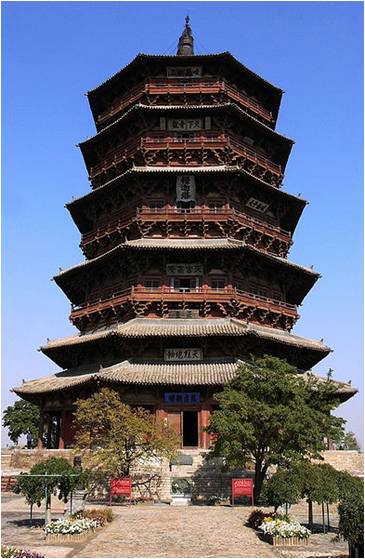
- Chinese architecture : a style of architecture that took shape in Asia over many centuries.
- The structural principles have remained largely unchanged, the main changes being only the decorative details.
- Chinese architecture has had a major influence on the architectural styles of Korea, Vietnam and Japan.
- The traditional skills include major carpentry, minor carpentry, masonry, and stone masonry.
Features
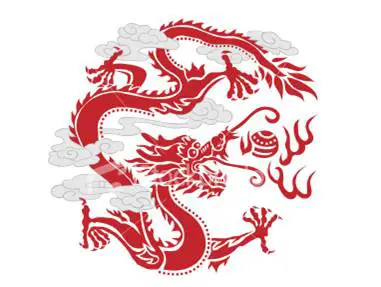
- Architectural Bilateral Symmetry
- Enclosure
- Hierarchical
- Horizontal Emphasis
- Feng Shui
- Structure
- Classification by Structure
- Architectural Types:
- Commoner
- Imperial
- Religious
Bilateral Symmetry
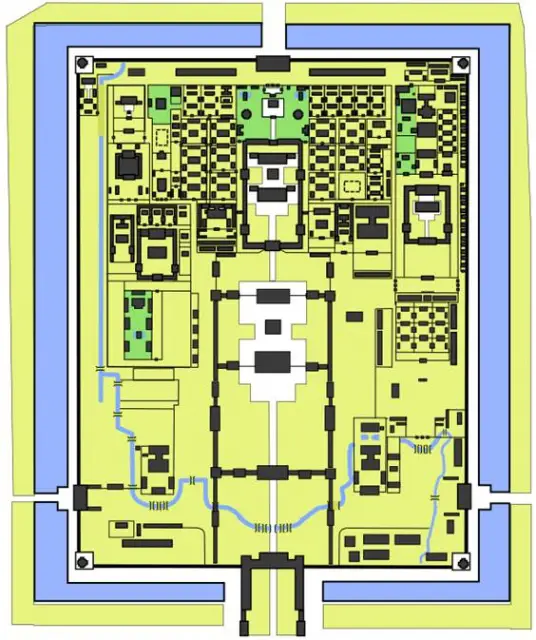
- Chinese architecture emphasises on articulation and bilateral symmetry, which signifies balance.
- Secondary elements are positioned either side of main structures to maintain overall symmetry.
- In contrast to the buildings, Chinese gardens are an exception which tends to be asymmetrical.
- The principle underlying the garden’s composition is to create enduring flow.
Enclosure
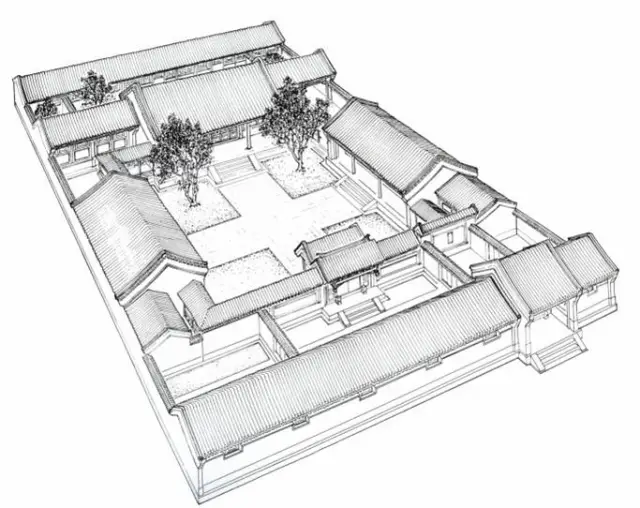
- Buildings or building complexes in china take up an entire property but encloses open spaces within itself. These enclosed spaces come in two forms: the open courtyard and the “sky well“.
- The use of open courtyards is a common feature in many types of Chinese architectures. This is best exemplified in the Si-he-yuan, which consists of an empty space surrounded by buildings.
- These enclosures serve in temperature regulation and in ventilation.
- Courtyards are open and facing the south to allow the maximum exposure of the building to the sun while keeping the cold northern winds out.
Hierarchy in Architecture
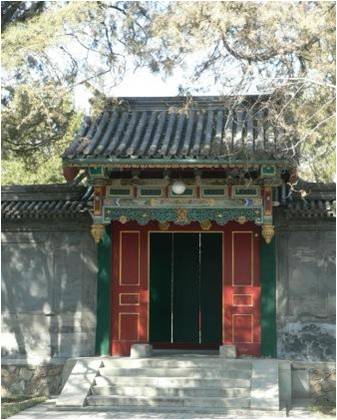
- The hierarchy and importance and uses of buildings in traditional Chinese architecture are based on the strict placement of buildings in a property/complex.
- Buildings with doors facing the front of the property are considered more important than those faces the sides.
- Building facing away from the front of the property are the least important.
- Contrarily building in the rear and more private parts of the property are held in higher esteem and are reserved for elder members of the family than buildings near the front, which are for servants.
- Front facing buildings in the back of properties are used particularly for rooms of celebratory rites.
- In multiple courtyard complexes, Central courtyard and their buildings are considered more important than peripheral ones
Horizontal Emphasis
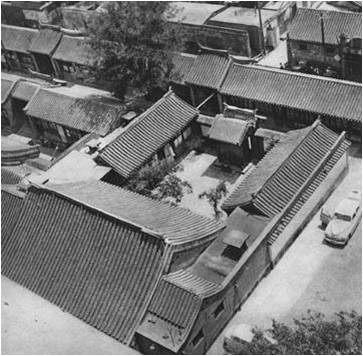
- Classical Chinese buildings of the wealthy are built with an emphasis on breadth and less on height.
- Close heavy platforms and a large roof that floats over this base, vertical walls not well emphasized, Chinese architecture stresses the width of the buildings.
- The halls and palaces in the Forbidden City, for example, have rather low ceilings.
- This of course does not apply to pagodas, which are and limited to religious building complexes.
Feng Shui
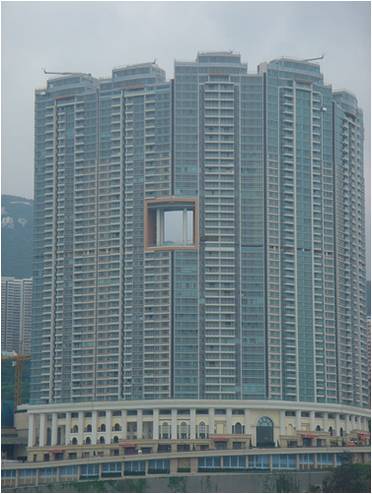
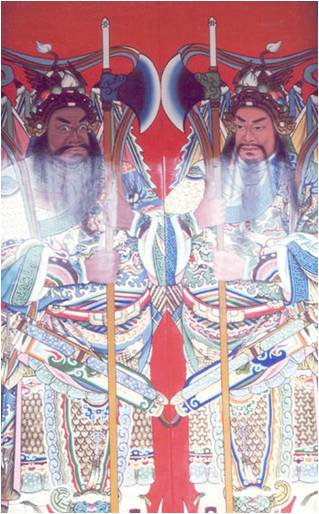
- Concepts from feng shui and mythic elements of Daoism are usually present in the construction and layout of Chinese architecture, from common residences to imperial and religious structures.
- Screen walls to face the main entrance of the house, which stems from the belief that evil things travel on straight lines.
- Talismans and fortuitous imagery
- Door gods displayed on doorways to ward evil and encourage the flow of good fortune
- Three anthropomorphic figures representing Fu Lu Shou stars are prominently displayed, sometimes with the proclamation “the threes star are present“
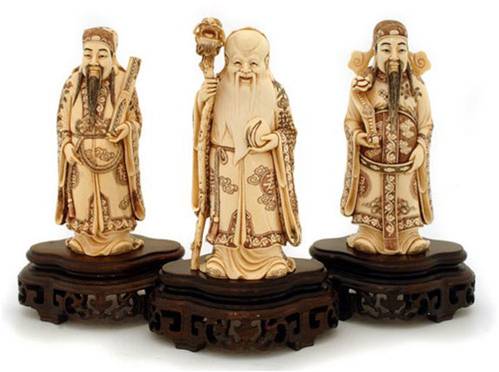
- Fruits and animals that symbolize good fortune and prosperity, such as bats and pomegranates, respectively.
- Orienting the structure with its back to elevated landscape and ensuring that there is water in the front.
- Considerations are also made such that the generally windowless back of the structure faces the north, where the wind is coldest in the winter
Structure
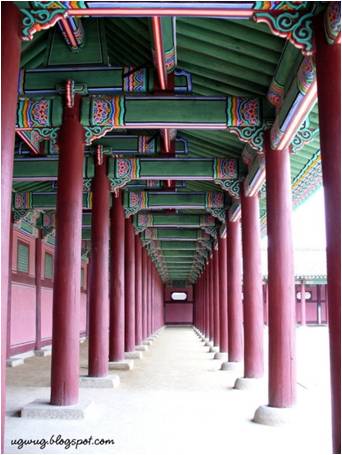
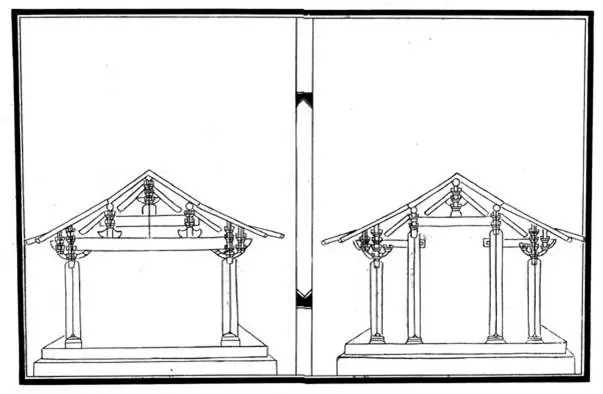
- Large trimmed logs are used as load-bearing columns and lateral beams for framing buildings and supporting the roofs.
- These structural timbers are prominently displayed in finished structures. However, it is not known how the ancient builders raised the huge wooden load bearing columns into position.
- Although, structural walls are also commonly found, most timber framed architecture are preferred.
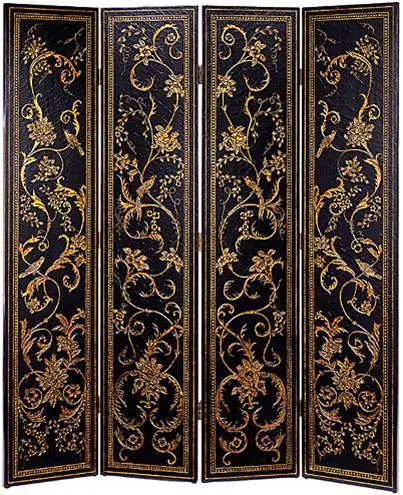
- Timber frames are typically constructed with joints and doweling alone. Structural stability is further ensured through the use of heavy beams and roofs, which weighs the structure down.
- Using even numbers of columns in a building structure to produce odd numbers of bays, a main door to the building in the centre bay, symmetry is maintained.
- Use of curtain walls or door panels to delineate rooms, with the de-emphasis of load-bearing walls in higher class construction.
- Three main types of roofs are found:
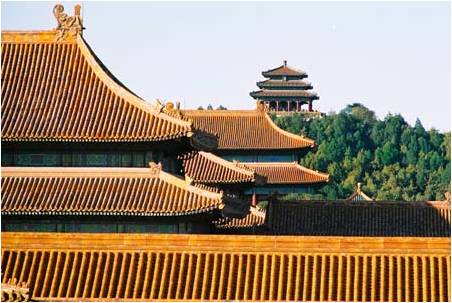
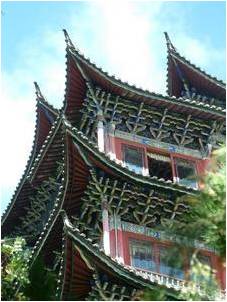
Straight Inclined: These are the most economical type of roofing and are found in commoner architecture.
Multi-inclined: Roofs with 2 or more sections of incline. These roofs are used in higher class constructions
Sweeping: Roofs with a sweeping curvature that rises at the corners of the roof. The types of roof construction are usually reserved for temples.
- The ridges are sometimes extended or incorporated from the walls of the building to form matouqiang (horse-head walls), which serve as a fire deterrent from drifting embers.
Architectural Types
Commoner
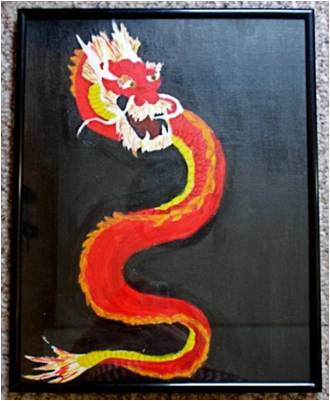
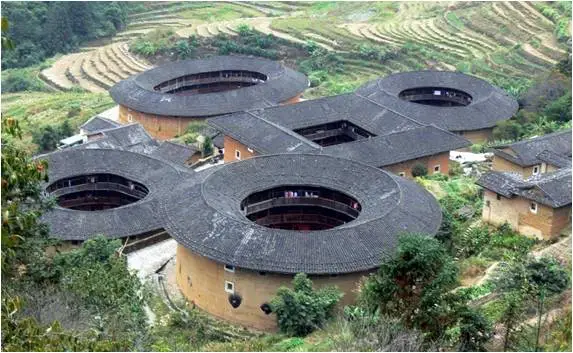
- Commoner houses tended to follow a set pattern:
- The centre of the building would be a shrine for the deities , which would also be used during festivities.
- On its two sides were bedrooms for the elders; the two wings of the building (known as “guardian dragons” by the Chinese) were for the junior members of the family, as well as the living room, the dining room, and the kitchen
- Sometimes the extended families became so large that one or two extra pairs of “wings” were built. This resulted in a U-shaped building, with a courtyard suitable for farm work; merchants and bureaucrats, however, preferred to close off the front with an imposing front gate.
- All buildings were legally regulated, and the law held that the number of storeys, the length of the building and the colours used depended on the owner’s class. Some commoners living in areas plagued by bandits built communal fortresses called Tulou for protection.
- Taoist architecture, on the other hand, usually follow the commoners’ style.
Imperial
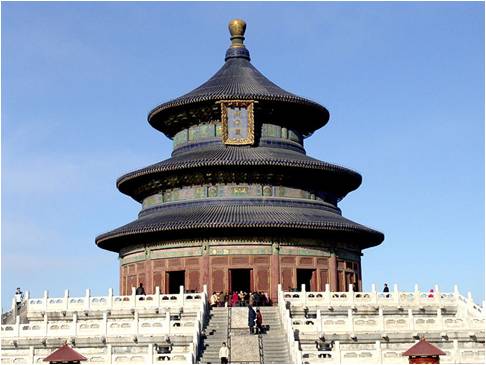
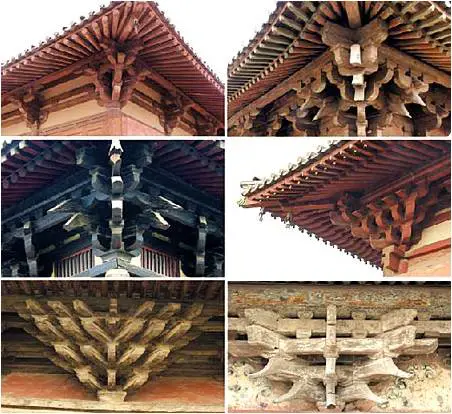
- There were certain architectural features that were reserved solely for buildings built for the Emperor of China. One example is the use of yellow roof tiles; yellow having been the Imperial colour, yellow roof tiles still adorn most of the buildings within the Forbidden City.
- The Temple of Heaven, however, uses blue roof tiles to symbolize the sky.
- The roofs are almost invariably supported by brackets (“dougong”), a feature shared only with the largest of religious buildings.
- The wooden columns of the buildings, as well as the surface of the walls, tend to be red in colour.
- Black is also a famous colour often used in pagodas. They believe the gods are inspired by the black colour to descend on to the earth.
- The Chinese five-clawed dragon, adopted by the first Ming emperor for his personal use, was used as decoration on the beams, pillars, and on the doors on Imperial architecture. Curiously, the dragon was never used on roofs of imperial buildings.
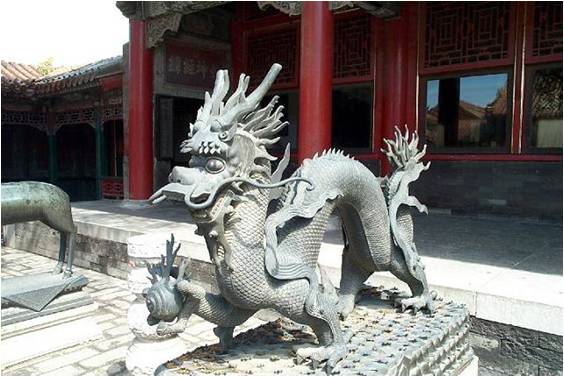
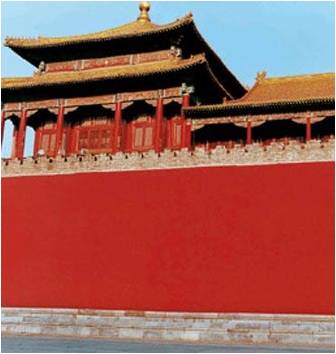
- Only the buildings used by the imperial family were allowed to have nine jian ( space between two columns)
- Only the gates used by the Emperor could have five arches, with the centre one, of course, being reserved for the Emperor himself.
- The ancient Chinese favoured the colour red.
Religious
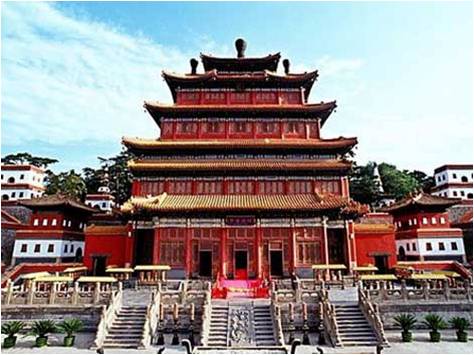
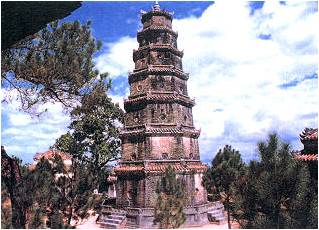
- Generally speaking, Buddhist architecture follows the imperial style.
- A large Buddhist monastery normally has a front hall, housing the statue of a Bodhisattva, followed by a great hall, housing the statues of the Buddhas.
- Accommodations for the monks and the nuns are located at the two sides. Some of the greatest examples of this come from the 18th century temples of the Puning Temple and the Putuo Zongcheng Temple.
- Buddhist monasteries also have pagodas, which house the relics of the Buddha; older pagodas tend to be four-sided, while later pagodas have eight-sides.
The Great Wall of China
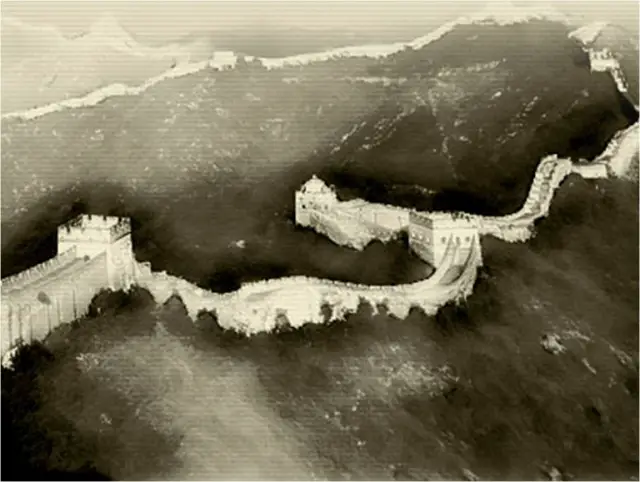
- Called “Wan-Li Qang-Qeng“ in Chinese meaning 10,000-Li Long Wall (10,000 Li = about 5,000 km).
- Built, rebuilt, and maintained between the 5th century BC and the 16th century
- Stretches from Shanhaiguan in the east to Lop Nur in the west
- After the unification of China in 221 B.C., the first emperor of Qin Dynasty linked the walls of the three states in the north and formed the first great wall
- Most of the Great Wall today, was built in the Ming Dynasty (1368-1644)
Timeline
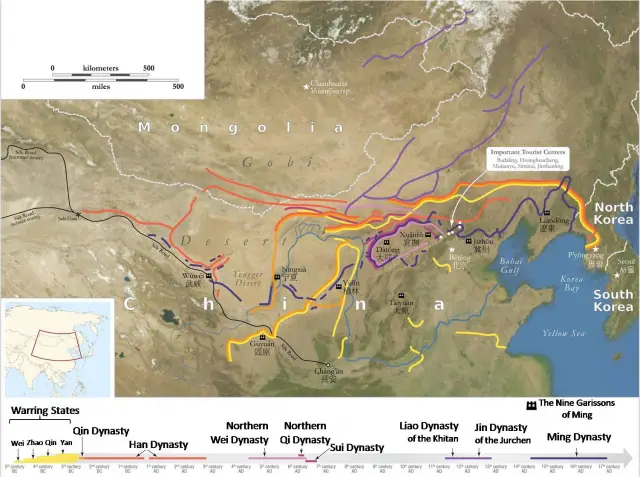
Works on the Wall
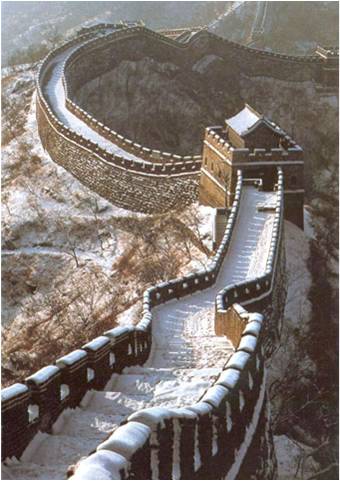
- Defensive works such as forts, passes and beacon towers were built along the Wall to house auxiliary soldiers, store grain and weapons, and transmit military information.
- Provided protection to the economic development and cultural progress, safeguarded the trading routes such as the Silk Road, and secured transmission of information and transportation.
History
Warring States
- Constructed the wall to defend their own borders. Built to withstand the attack of small arms (swords, spears).
- These walls were made mostly by stamping earth and gravel between board frames.
Qin Dynasty(Under Qin Shi Huang’s Rule)
- To impose centralized rule and prevent the resurgence of feudal lords, the emperor destroyed the wall sections that divided his empire along the former state borders .
- To protect the empire from Xiongnu (a nomadic tribe) attacks, a wall was built to connect the remaining barriers, along the empire’s new northern frontier.
- Transportation of materials for the construction was difficult, so stones found locally were used over mountain ranges, while rammed earth was used in the plains.
Han, Northern, Sui, Liao and Jin Dynasties
- All repaired, rebuilt, or expanded sections of the Great Wall
- To protect the smooth trade with kingdoms is Central and West Asia and against the Xiongnu people.
Ming Dynasty
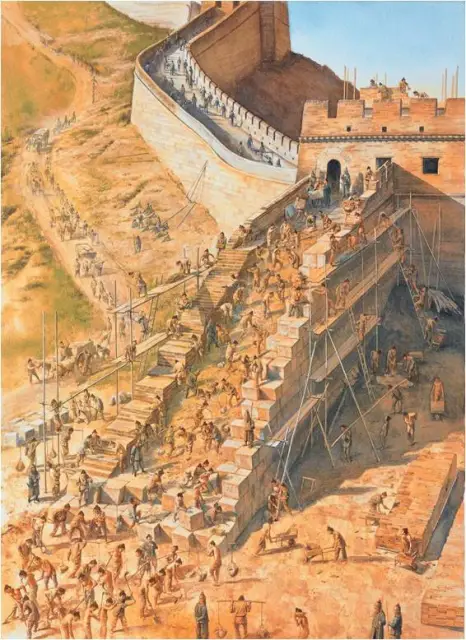
- Following their defeat by the Oirats in the Battle of Tumu in 1449 and successive battles with the Manchurian and Mongolian tribes after, the Ming adopted a new strategy to keep the nomadic tribes out. They constructed walls along the northern border of China.
- Acknowledging the Mongol control established in the Ordos Desert, the wall followed the desert’s southern edge instead of incorporating the bend of the Huang He.
- Unlike the earlier Qin fortifications, the Ming construction was stronger and more elaborate due to the use of bricks and stone instead of rammed earth.
11 Garrisons1 of Ming
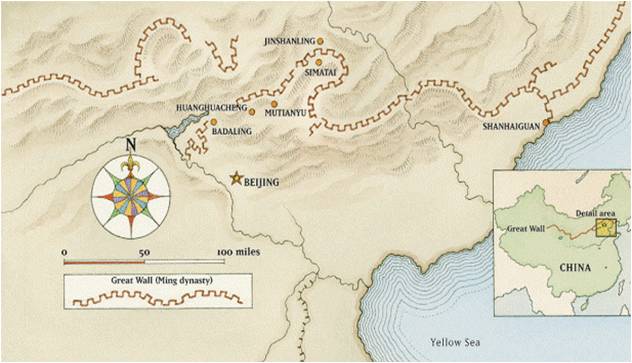
To support its frontier defenses, the Ming authorities established eleven Great Wall garrisons, within nine border districts. The garrisons came under the control of three Governors-generals: General Jiliao, General Xuanda and General Shaanxi Sanbian. Their names derived from the garrisons under their respective commands.
Structure of the Great Wall of China
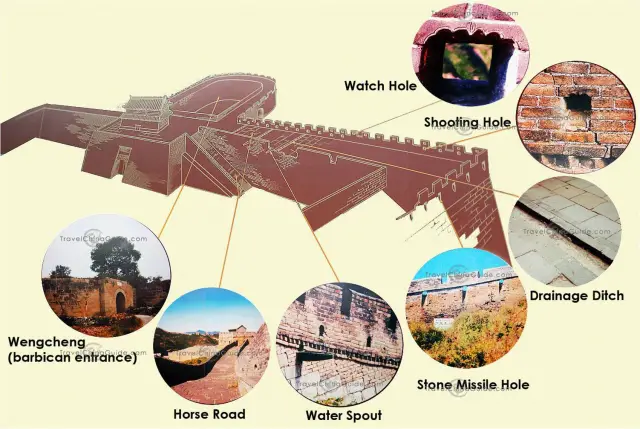
The Forbidden City
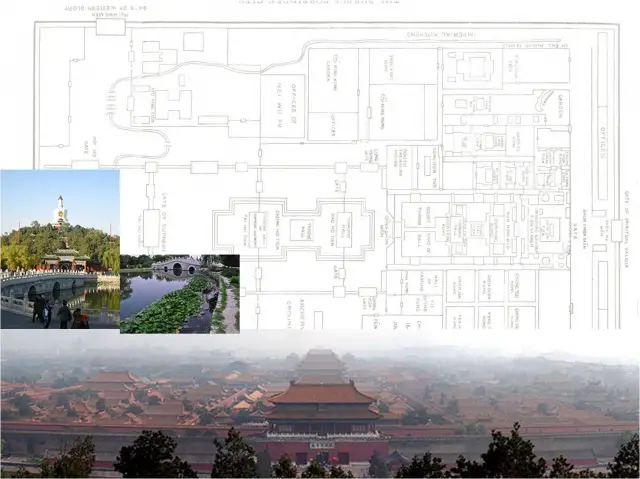
紫
禁
城
(Zǐ-jin-chéng)
Beijing is both the present capital of China as well as the major historical capital. Serving as the source of power in china for almost a millennium it houses The Forbidden City – largest collection of preserved ancient wooden structures in the world.
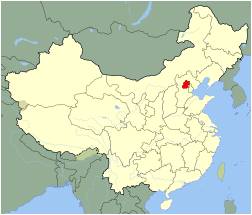
Early History
- Homo erectus fossils from nearby caves date to 230,000 to 250,000 years ago.
- Palaeolithic homo sapiens lived near Beijing about 27,000 years ago.
- The capital of the State of Yan, one of the powers of the Warring States Period was established in present-day Beijing.
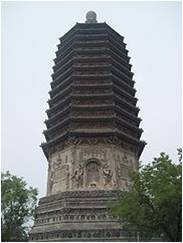
Medieval History
- In 938 AD, The northern Kitan Liao Dynasty set up their secondary capital in Present Day Beijing after conquering the surrounding regions from the Later Jin Dynasty, calling it Nanjing (Southern Capital).
- The Jurchen Lin Dynasty made Nanjing the permanent capital calling it Zhongdu (central capital).
- Mongol forces destroyed Zhongdu in 1215.
- Later in preparation to establish the Yuan Dynasty Kublai Khan rebuilt Zhongdu Slightly to the north and called it Dadu (great capital).
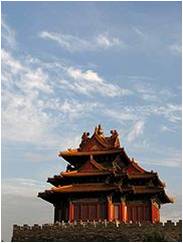
Ming and Qing Periods
- Dadu was renamed Beiping (northern peace) when the first Ming Emperor, Zhu Yuanzhang conquered it.
- In 1403, the third Ming Emperor renamed it Beijing (northern capital) and made it the co-capital along with Nanjing (to the southwest).
- Construction on a new Imperial residence, the Forbidden City lasted nearly 15 years (1406 to 1420).
- From 1421 onwards, Beijing was the “official” capital of the Ming Dynasty while Nanjing was demoted to the status of “secondary” capital.
- Beijing’s current shape was almost set by the 15th century and is believed to have been the largest city in the world from 1425 to 1650
- Important Buildings built during this time:
- The Temple of Heaven – 1420
- Tiananmen Gate – 1420
- Tiananmen Square – 1651
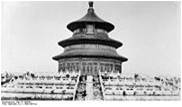
The Temple of Heaven
- The Prince Dorgon established the Qing dynasty in 1644 by capturing Beijing from rebelling peasants that had overthrown the Ming Dynasty.
- Due to the Boxer rebellion that ended the Qing dynasty in 1900, several buildings including The Summer Palace were destroyed
The Forbidden City
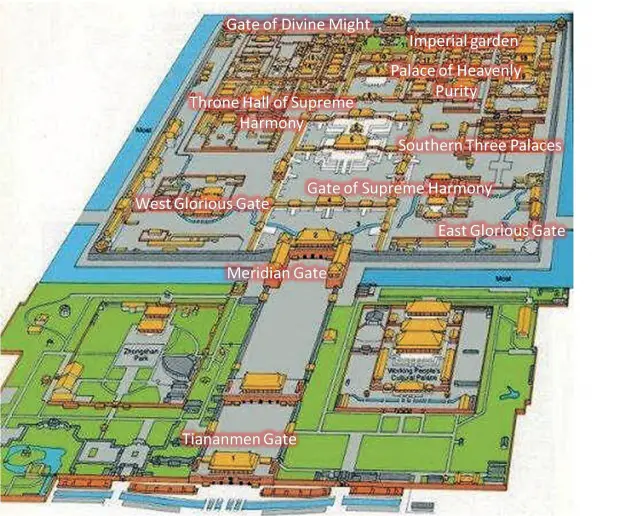
- Imperial palace from the Ming Dynasty to the end of the Qing Dynasty.
- It is located in the middle of Beijing, China,
- Served as the home of the Emperor and his household and the ceremonial and Political centre of Chinese government.
Walls, Gates and Ways 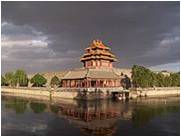
- Surrounded by a high city wall and a six-metre deep moat.
- The walls are wide at the base, tapering at the top. These walls served as both defensive walls and retaining walls for the palace.
-
- They were constructed with a rammed earth core, and surfaced with three layers of specially baked bricks on both sides.
- At the four corners of the wall sit towers with intricate roofs. These towers are the most visible parts of the palace to the outside
- The wall is adorned by a gate on each side. They are:
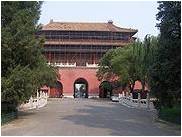
The East Glorious Gate
- North – Gate of Divine Might (faces Jingshan Park)
- South – Meridian Gate
- East and West – East Glorious Gate and West Glorious Gate
- The Meridian Gate has two protruding wings forming a square Wumen, or Meridian Gate, Square.
- The gate has five gateways, with the central gateway forming part of the Imperial Way, a stone flagged path that forms the central axis of the Forbidden City and the ancient city of Beijing itself.
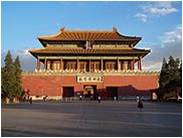
The northern Gate of Divine Might - It leads all the way from the Gate of China in the south to Jingshan park in the north. Only the Emperor, Empress or the successful students of the Imperial Examination may walk on it.
Outer Court
Key Features –
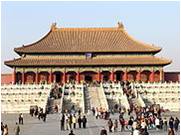
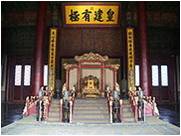
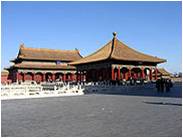
- Gate of Supreme Harmony.
- Hall of Supreme Harmony Square from which three-tiered white marble terrace rise. The three main buildings stand atop this terrace. They are:
- The Hall of Supreme Harmony – It is the ceremonial centre of imperial power. Initially the Emperor held court here to discuss affairs of state but later was used for ceremonial purposes.
- The Hall of Central Harmony – is a smaller, square hall, used by the Emperor to prepare and rest before and during ceremonies.
- The Hall of Preserving Harmony – was used for rehearsing ceremonies, and was also the site of the final stage of the Imperial examination.
- To the south west lie the halls of Military Eminence used for ceremonial lectures by highly regarded Confucian scholars, and later the office of the Grand Secretariat.
- To the south east lies the hall of Literary Glory which the Palace’s own printing house.
- To the north-east are the Southern Three Places which was the residence of the Crown Prince.
Inner Court
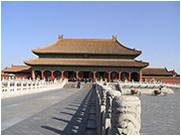
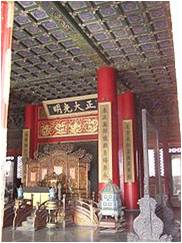
- At the centre of the Inner Court is another set of three halls. They are:
- The Palace of Heavenly Purity – is a double – eaved building connected to the Gate of Heavenly Purity to its south by a raised walkway. In the Ming Dynasty, it was the residence of the Emperor.
- The Palace of Earthly Tranquility – In the Ming Dynasty, it was the residence of the Empress later converted for shamanist worship by the Manchu Qing’s. Two rooms in the Palace of Earthly Harmony were retained for use on the Emperor’s wedding night.
- Hall of Union – is square in shape with a pyramidal roof and is located b/w the two above buildings. Stored here are the twenty-five Imperial Seals of the Qing Dynasty, as well as other ceremonial items.
- Imperial Garden – The small and compact garden contains several elaborate landscaping features.
- To the north of the garden is the Gate of Divine Might.
- Palace of Tranquil Longevity – is a complex built in anticipation of retirement. It mirrors the set-up of the Forbidden City. The entrance to the Palace of Tranquil Longevity is marked by a glazed-tile Nine Dragons Screen.
Symbolism
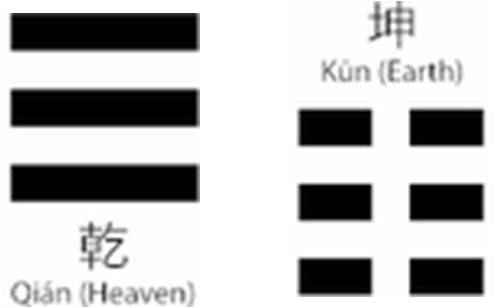

The design was meticulously planned to reflect philosophical and religious principles, and above all to symbolize the majesty of Imperial power.
Key Features:
- Yellow being the color of the Emperor, almost all roofs in the Forbidden City have yellow glazed tiles.
- The main halls of the Outer and Inner courts are all arranged in groups of three — the shape of the Qian trigram, representing Heaven. The residences of the Inner Court on the other hand are arranged in groups of six — the shape of the Kun trigram, representing the Earth.
- The sloping ridges of building roofs are decorated with a line of statuettes lead by a man riding a phoenix and followed by an imperial dragon. The number of statuettes denotes the status of the building.
- The layout of buildings follows ancient customs laid down in the Classic of Rites. Thus, ancestral temples are in front of the palace. Storage areas are placed in the front part of the palace complex, and residences in the back.

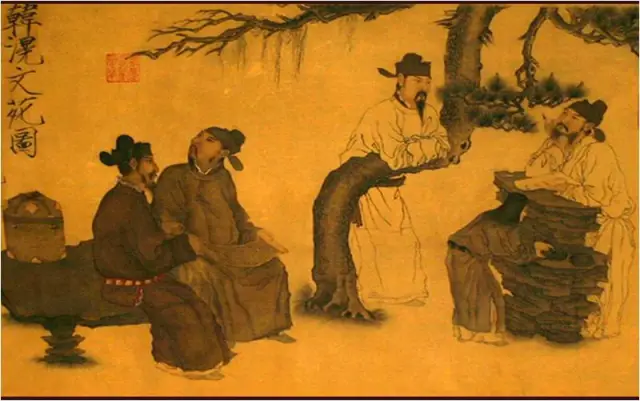
Leave a Reply
You must be logged in to post a comment.